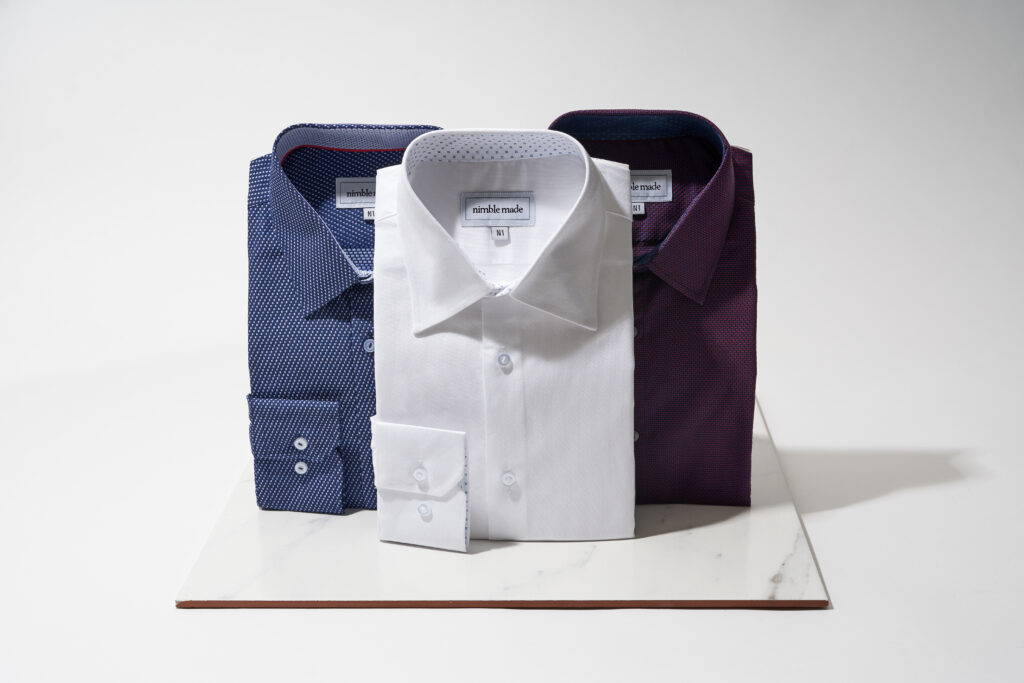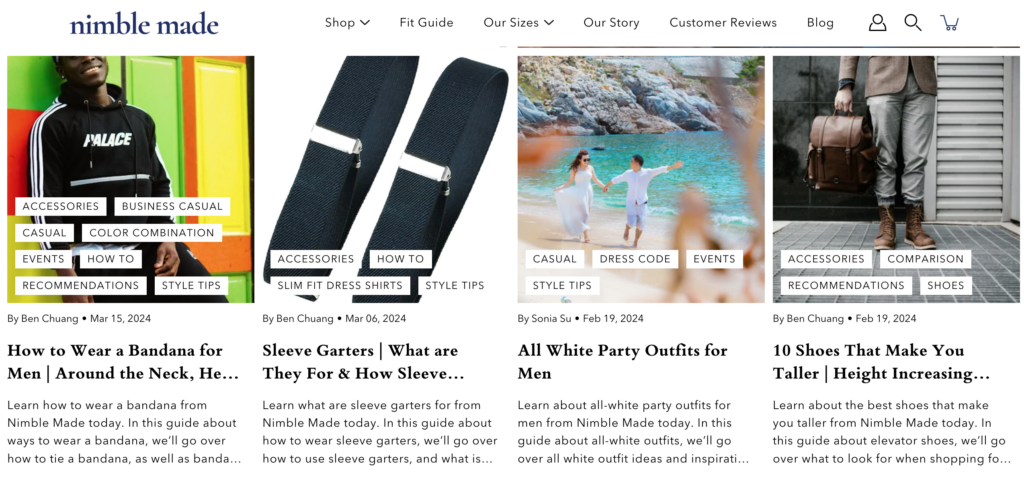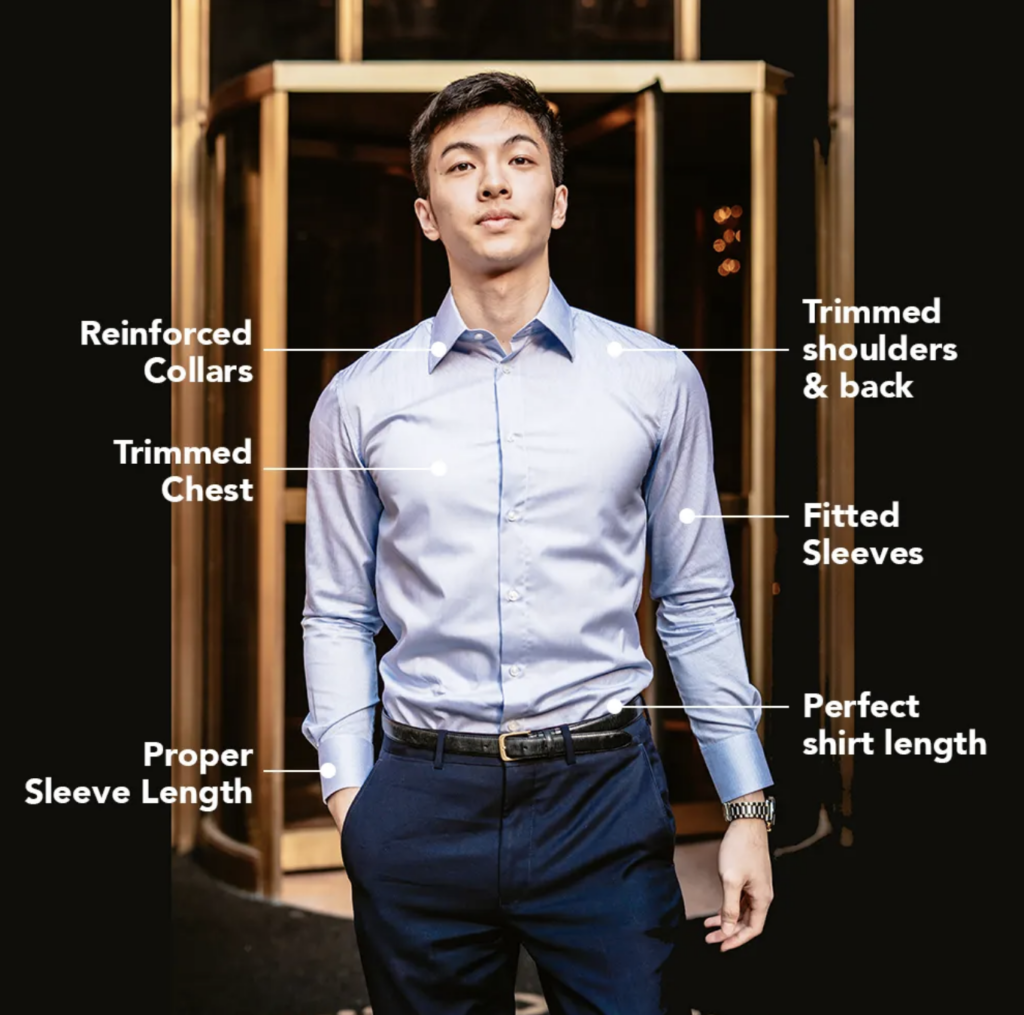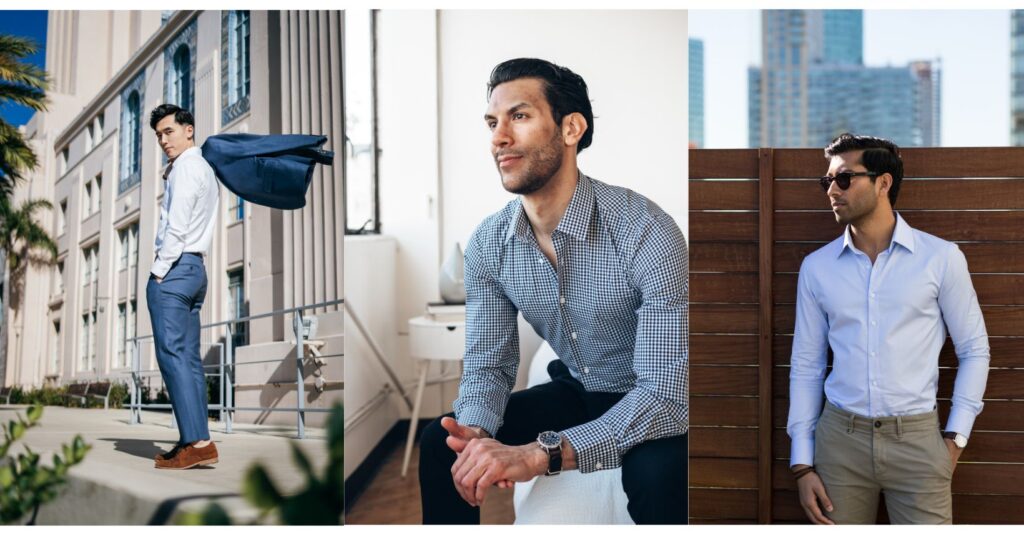Tanya Zhang had a strong educational background and a series of jobs in advertising and fintech, but something was missing.
Her friend, Wesley Tang, was frustrated with the fit of men’s clothing, and Tanya understood the struggle after seeing her own father and other friends struggle to find garments for slim figures.
In 2018, they decided to launch a brand together called Nimble Made, which offers an inclusive slim-fit solution for underserved markets. Today, their business is earning 6 figures a year.
Keep reading to find out:
- Tanya’s professional background
- How she created their brand and website
- Where her income comes from
- How much traffic their site gets
- Her main marketing strategy
- Her approach to keyword research
- How she creates content
- How she nurtures her email list
- Her go-to resources and tools
- Her biggest challenge
- Her greatest accomplishment
- Her main mistake
- Her advice for other entrepreneurs
Meet Tanya Zhang
Hi, I’m Tanya. I’m originally from Los Angeles, born and raised. My educational background is rooted in STEM, with a focus on Interdisciplinary Computing & the Arts from UC San Diego, alongside a Minor in Writing.
My professional journey began as an art director, where I honed my skills in crafting integrated creative ad campaigns at TBWACHIATDAY NY.
Transitioning from there, I ventured into the startup world as the first brand hire at Better.com, a fintech company.
Before founding Nimble Made, I was working in the realm of user experience and design, serving as a Senior UX/UI consultant at Ernst & Young LLP.
Why She Created Her Site
My co-founder, Wesley Kang, is Taiwanese-American. At the time of our venture’s inception, he was immersed in the finance sector, requiring him to wear a dress shirt daily for work.
However, being of a slimmer build, standing at 5’5” and weighing 140 lbs, he struggled to find a well-fitting off-the-rack dress shirt.
Similarly, my father, an immigrant from China, and other slim friends encountered the same struggle with US sizing. While there are many options for petite women like myself, men’s sizing fell short.
This shared experience fueled our mission as Asian American founders to bridge the gap in menswear, leveraging our unique narrative to create a truly inclusive slim-fit solution that resonates with underserved markets.
In late 2018, we launched Nimble Made in NYC, taking just six months from concept to market. With only $5,000 and a lot of sweat equity, we navigated the initial stages, including ideation, product development, testing, website creation, branding, and inventory procurement.
By late October 2018, we debuted with a live website and a small inventory batch, celebrating with a launch party in NYC before bidding farewell to our corporate jobs by year-end.
Today, Nimble Made remains entirely self-funded and bootstrapped. We have thousands of orders and customers and have expanded to over 35 different shirt styles in our 6 unique Actually Slim sizes. We’re a multiple six-figure business and hope to continue to grow and take our business to the next level.
How Much She’s Earning
Our business consistently generates a five-figure monthly revenue, typically ranging from $10,000 to $25,000 (due to seasonal fluctuations).
The primary income stream revolves around men’s products, notably dress shirts, which constitute approximately 90{5d3ddbe771dfd7baccbc708ede1f8581564c9b62644010c5b52d123c48304749} of our sales. Additionally, we derive a smaller portion of revenue, around 10{5d3ddbe771dfd7baccbc708ede1f8581564c9b62644010c5b52d123c48304749}, from running ads on our menswear blog articles.
While our initial goal of achieving six-figure annual revenue within the first three years of operation was met, we’ve maintained a similar annual revenue since the onset of the Covid-19 pandemic in 2020.
Currently, our focus remains on surpassing our next milestone of achieving multiple six-figure annual revenue.

On average, our website receives around 125,000 to 150,000 page views per month.
I usually work around 30-40 hours a week. It varies because sometimes I’ll take days off for a creative reset, while on other weeks I’ll be working nights and weekends as well.
It can feel like I’m working all the time, but since I’m growing my own business, it doesn’t feel like “work” or a burdensome chore that I have to “clock into.”
Tanya’s Top Marketing Strategy
SEO is at the core of our marketing strategy.
While most e-commerce brands like to leverage paid ads on social media platforms, we focused on SEO since the very beginning due to the high cost that PPC marketing can incur.
As a small family business, we felt more comfortable working as a lifestyle business and creating organic content that was evergreen rather than always expending money into an algorithm that we’d become dependent on.
Today, our focus is still on organic SEO, but we do also have a budget allocated to run meta ads as well.
When I started Nimble Made, I was unfamiliar with SEO, so we hired a freelancer to help manage the process. As our website began to receive more traffic, I became curious about leveraging SEO, and started to learn about it.
Eventually, I took on the responsibility myself. It was a challenging process, especially considering that I was also new to marketing in general.
Her Thoughts on SEO
SEO is crucial to us and has been an essential part of our strategy since day one. We reached our first 6-figure annual revenue just by leveraging organic SEO.
In terms of our overall strategy, we prioritize keyword research to target relevant terms, create high-quality content tailored to our audience’s interests, and optimize on-page elements like titles, headings, and meta descriptions.
We ensure that our site is mobile-friendly, employ internal linking to improve navigation, and actively build backlinks from authoritative sources.

Keyword Research
I use Ahrefs to discover new keywords within an attainable difficulty range, focusing on long-tail keywords pertinent to my niche, such as men’s clothing, fashion, and fit-related advice.
Additionally, I analyze competitor websites and blogs to identify keywords they rank for, integrating these into my content strategy.
Utilizing SaaS platforms like Surfer SEO, I craft articles tailored to these targeted keywords, optimizing for improved search engine visibility and organic traffic growth.
Link Building
Initially, link building was a big focus for us. We employed various methods such as paying for links, conducting organic outreach, and utilizing journalist and PR platforms like HARO and Cision to secure backlinks in exchange for providing quotes.
Being featured in PR articles and spotlights benefited us organically. However, as our domain has aged and our estimated Domain Authority (DA) stands at 50, our approach has shifted towards prioritizing the quality over the quantity of links.
While paying for links can offer short-term gains, it may not be sustainable in the long run; nonetheless, it can be a viable strategy for newer domains aiming to boost their DA.
Her Content Creation Process
We currently have an extensive library of 200+ articles live on our website.
Our content creation process begins with keyword research using Ahrefs, followed by creating briefs for our writers to develop SEO-optimized articles.
Once published, we use internal linking strategies between articles to effectively distribute link juice throughout our website.
Our target is to publish between 5 to 12 new articles each month, depending on our current focus. In addition, we always refresh our older blog articles, aiming for a ratio of approximately 80{5d3ddbe771dfd7baccbc708ede1f8581564c9b62644010c5b52d123c48304749} new articles to 20{5d3ddbe771dfd7baccbc708ede1f8581564c9b62644010c5b52d123c48304749} refreshed content.

Her Email List
We have an email list that has accumulated over the years. We capture email leads with a pop-up on our website, run meta ads to capture leads before sales, and occasionally offer promotions, gifts, or limited-time offers to capture high-intent emails.
We have about 10,000 emails in our database. However, when we send out campaigns, we target a smaller subset of this total list.
Specifically, we focus on a group that has shown higher engagement with our email content by opening or clicking on emails. By targeting this engaged segment, we can improve our overall deliverability rates.
Her Favorite Resources
I love the podcast “How I Built This” by Guy Raz. The host interviews successful entrepreneurs, allowing them to share their stories about creativity, leadership, and navigating the challenges of growing a business.
Jake Knapp wrote a great book about time management called Make Time: How to Focus on What Matters Every Day. This is a great tool for business owners with self-managed schedules who need to be strategic with their time allocation and I highly recommend it.

For someone building a similar business in the clothing industry, I’d recommend taking a 101 workshop on making garments, especially if you’re diving into a fit-specific niche. I wish I had more garment-making experience when I was starting out, but there were many opportunities to learn along the way!
For frameworks, I like using RICE.
The RICE scoring model is a prioritization framework designed to help product managers determine which products, features, and other initiatives to put on their roadmaps by scoring these items according to four factors. These factors, which form the acronym RICE, are reach, impact, confidence, and effort.
The three most important tools that I use on a daily basis are Shopify, Figma, and Ahrefs.
Our business revolves around Shopify, which hosts both our products and SEO-rich blog articles.
Many of our design elements are created on Figma, while Ahrefs helps us with targeted keyword research for creating organic content.
Her Biggest Challenge
The first year was the hardest. We both lacked a marketing background that would’ve really helped us with understanding how to find and talk to our customers.
We spent a lot of time and money testing marketing channels and different strategies and worked with many contractors and agencies to find our path to success.
There are always new challenges at every stage of a business, so being able to stay resilient and never giving up is the most important characteristic to have.
Her Greatest Accomplishment
I’m proud of how far we’ve come, as a business that’s bootstrapped since day 1 that now nets six-figure yearly revenues and continues to grow.
As Asian-American founders, we believe in bringing representation to our community and beyond. We strive to create more dialogue by redefining sizing standards in the clothing industry and use Nimble Made to spread more awareness of our culture.

What She Wishes She Knew When She Started
I wish I had more hands-on experience with crafting garments and the clothing industry, as well as a deeper marketing background. However, the challenges that we faced have really shaped us to be resilient and data-driven, while also very empathic business owners for our customers.
Getting to know myself has been the most helpful part of growing Nimble Made, because I’ve come to learn what risks I’m willing to take, what motivates me, and how to continuously push myself out of my comfort zone.
Tanya’s Main Mistake
We were too conservative with our expenses during our first year, trying to save a dollar here and there for supplies that we needed more of.
For example, we ordered the bare minimum in inventory and ended up not having enough shirts to prepare us for Q4, leaving us empty-handed during the holiday season.
We ran out of our mailer boxes and had to ship our $80 dress shirts in USPS boxes and apologized to our customers for the lackluster packaging during the holidays.
We were constantly running out to the store to get more tape, tissue paper, extra clips, etc. I learned to not underestimate myself, the business, and to take bigger risks when it comes to putting down money to grow the business.
Her Advice for Other Entrepreneurs
Find a product or mission that drives you. If it’s one thing you need in entrepreneurship, it’s resilience.
There are so many obstacles to overcome and take on on a daily basis and having the perseverance to get through them is, honestly, most of the battle.
It really helps to have a product and mission you’re very passionate about to remind you and keep you grounded in what you’re doing.
